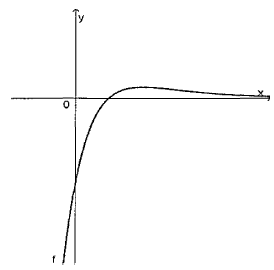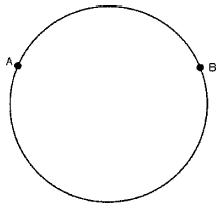Based on the text below, answer the six questions that
follow it. The paragraphs of the text are numbered.
If children lose contact with nature they won't
fight for it
[1] According to recent research, even if the
present rate of global decarbonisation were to double, we
would still be on course for 6°C of warming by the end of
the century. Limiting the rise to 2°C, which is the target of
current policies, requires a six-time reduction in carbon
intensity.
[2] A new report shows that the UK has lost 20% of
its breeding birds since 1966: once common species such
as willow tits, lesser spotted woodpeckers and turtle doves
have all but collapsed; even house sparrows have fallen by
two thirds. Ash dieback is just one of many terrifying plant
diseases, mostly spread by trade. They now threaten our
oaks, pines and chestnuts.
[3] While the surveys show that the great majority
of people would like to see the living planet protected, few
are prepared to take action. This, I think, reflects a second
environmental crisis: the removal of children from the
natural world. The young people we might have expected
to lead the defence of nature have less and less to do with
it.
[4] We don't have to undervalue the indoor world,
which has its own rich ecosystem, to lament children's
disconnection from the outdoor world. But the experiences
the two spheres offer are entirely different. There is no
substitute for what takes place outdoors, mostly because
the greatest joys of nature are unplanned. The thought that
most of our children will never swim among
phosphorescent plankton at night, will never be startled by
a salmon leaping, or a dolphin breaching is almost as sad
as the thought that their children might not have the
opportunity.
[5] The remarkable collapse of children's
engagement with nature - which is even faster than the
collapse of the natural world - is recorded in Richard Louv's
book Last Child in the Woods, and in a report published
recently by the National Trust. Since the 1970s the area in
which children may roam without supervision has
decreased by almost 90%. In one generation the
proportion of children regularly playing in wild places in the
UK has fallen from more than half to fewer than one in 10.
In the US, in just six years (1997-2003) children with
particular outdoor hobbies fell by half. Eleven- to 15-year-olds in Britain now spend, on average, half their waking
day in front of a screen.
[6] There are several reasons for this collapse:
parents' irrational fear of strangers and rational fear of
traffic, the destruction of the fortifying lands where previous
generations played, the quality of indoor entertainment, the
structuring of children's time, the criminalisation of natural
play. The great indoors, as a result, has become a far
more dangerous place than the diminished world beyond.
[7] The rise of obesity and asthma and the decline
in cardio-respiratory fitness are well documented. Louv
also links the indoor life to an increase in attention deficit
hyperactivity disorder and other mental ill health. Research
conducted at the University of Illinois suggests that playing
among trees and grass is associated with a marked reduction in indications of ADHD, while playing indoors
appears to increase them. The disorder, Louv suggests,
"may be a set of symptoms aggravated by lack of exposure
to nature". Perhaps it's the environment, not the child, that
has gone wrong.
[8] In her famous essay the Ecology of Imagination
in Childhood, Edith Cobb proposed that contact with nature
stimulates creativity. Reviewing the biographies of 300
"geniuses", she exposed a common theme: intense
experiences of the natural world in the middle age of
childhood (between five and 12). Animals and plants, she
argued, are among "the figures of speech in the rhetoric of
play... which the genius, in particular of later life, seems to
remember".
[9] Studies in several nations show that children's
games are more creative in green places than in concrete
playgrounds. Natural spaces encourage fantasy and
roleplay, reasoning and observation. The social standing of
children there depends less on physical dominance, more
on inventiveness and language skills.
[10] And here we meet the other great loss. Most
of those I know who fight for nature are people who spent
their childhoods immersed in it. Without a feel for the
texture and function of the natural world, without an
intensity of engagement almost impossible in the absence
of early experience, people will not devote their lives to its
protection.
[11] Forest Schools, Outward Bound, Woodcraft
Folk, the John Muir Award, the Campaign for Adventure,
Natural Connections, family nature clubs and many others
are trying to bring children and the natural world back
together. But all of them are fighting forces which, if they
cannot be changed, will deprive the living planet of the
wonder and delight that for millennia have attracted
children to the wilds.
(Adapted from:
https://www.theguardian.com/commentisfree/2012/nov/19/children-lose-contact-with-nature)

 , λ ∈ ℜ. Sendo assim, assinale a opção que indica a área da
região triangular X determinadas por r1, r2 e r3.
, λ ∈ ℜ. Sendo assim, assinale a opção que indica a área da
região triangular X determinadas por r1, r2 e r3.  , quando |z| = 2.
, quando |z| = 2.


 onde Mn = M x M x ... x M,
com n fatores, x a soma dos elementos da 1a coluna de
M12 e y a soma dos elementos da 3a coluna de M12.
onde Mn = M x M x ... x M,
com n fatores, x a soma dos elementos da 1a coluna de
M12 e y a soma dos elementos da 3a coluna de M12.
 e e assinale a opção correta.
e e assinale a opção correta.